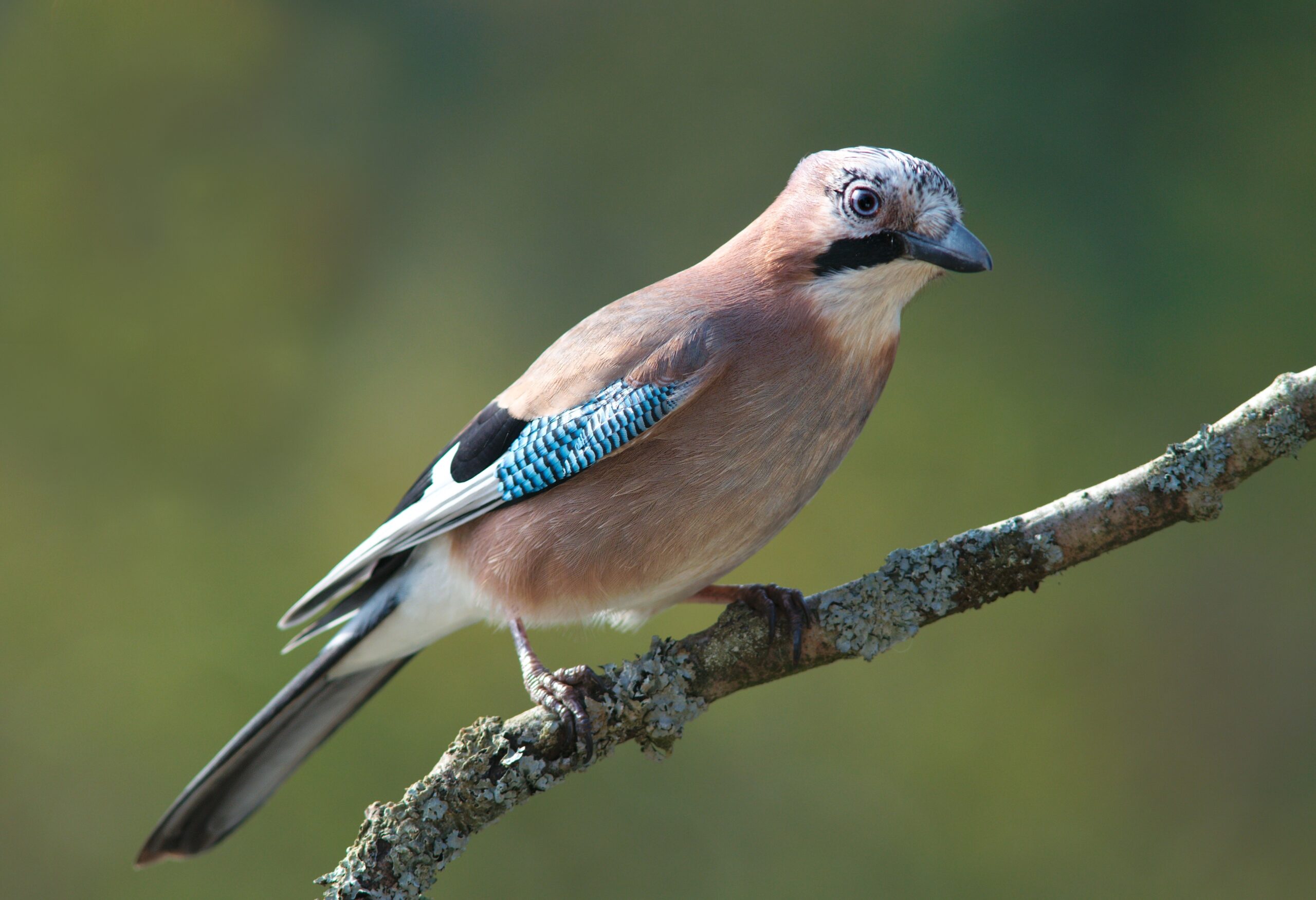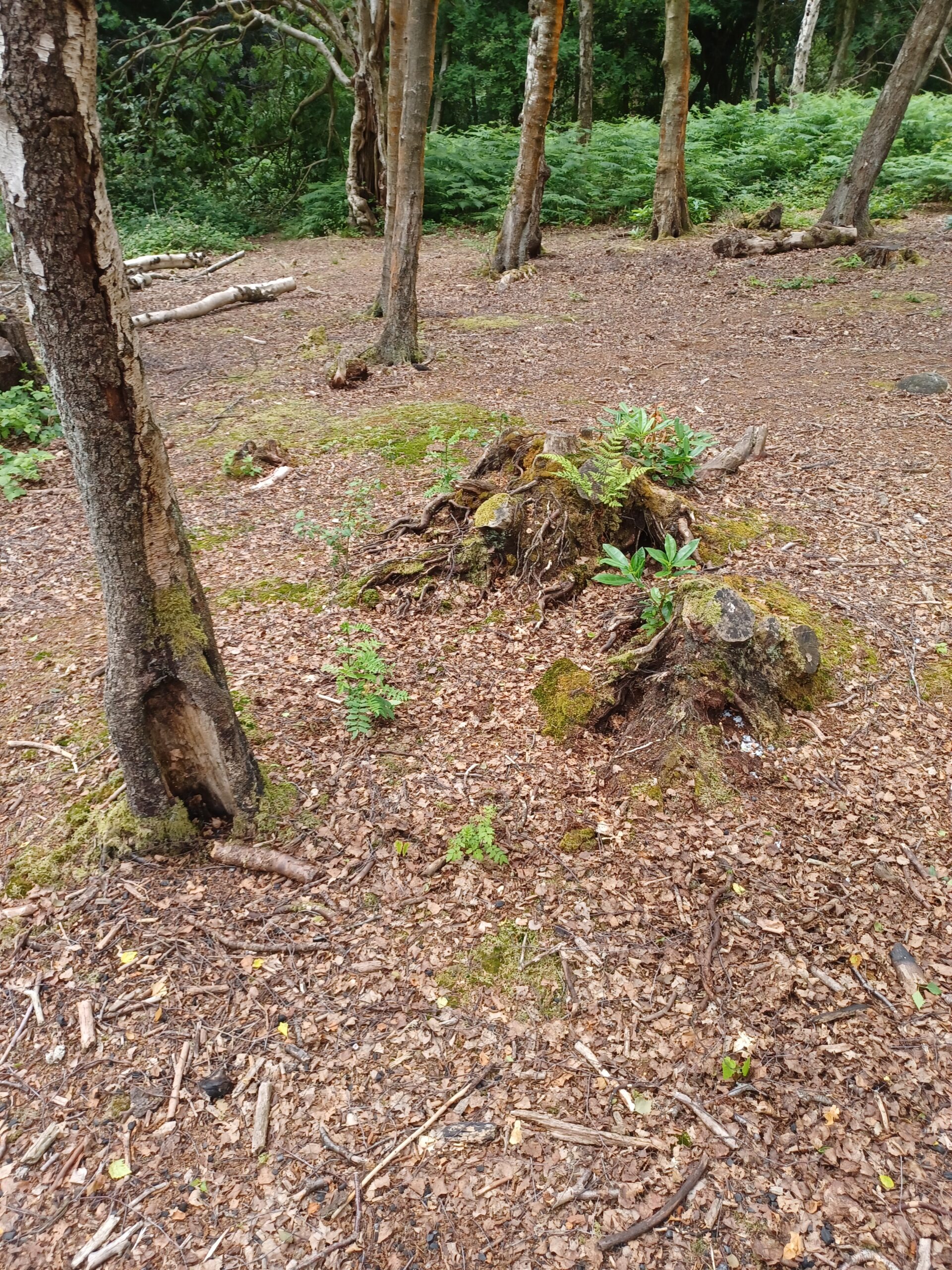
Tree felling and rhododendron clearance work in the Statutory Plant Health Notice (SPHN) areas is now mostly complete. The last load of timber has left the site, and the main paths have been restored and re-opened.
Our vision for the future is a sustainable, diverse native woodland with healthy tree cover from the ground to the tallest canopy. To make this a reality, we need your help to restore and replant the affected areas. With help from the community, we can ensure that future generations will be able to experience and appreciate this amazing environment.
Restocking Woodland
We need to restore the tree and ground cover that was lost due to disease and Rhododendron, and the Council aims to re-establish native trees in these areas within ten years.
Our partner, the Jay bird, has already started the task: they buried acorns last autumn, and these saplings are now beginning to sprout some distance from the nearest oak tree. One activity is to locate these new saplings and put guards in place to safeguard them from deer browsing.

Eurasian Jay collects and buries acorns in autumn, some sprout and become new oak trees. (Luc Viatour.)
This autumn, the Trees and Woodlands Team will begin replanting with saplings along the slopes above Coppice Bog or the “Peat Dykes” and in the area below it. Initially, Oak and other native species will be established, along with faster-growing birch, rowan, and Scots pine. Across the other affected areas, we will be monitoring natural regeneration. There are sources of native tree seeds on site that will soon begin to colonise the open ground now it is exposed to sunlight and is free of Rhododendron. There may be opportunities to support tree planting in these areas to achieve good density and variety.
Regenerating the ground flora
Where did Rhododendron come from?
Rhododendron ponticum is not native to the British Isles. It is believed to have originated from East Asia and the Himalayas and was first introduced to the UK via Gibraltar in 1763. In the 19th Century, this plant became popular due to its decorative value and ability to provide game birds with shelter. Notably, the Ferrand family were avid hunters and likely used it for this purpose.
What is the impact of Rhododendron?
Those enthusiastic gardeners were unaware at the time that Rhododendron is a successful escape artist and colonist; each flower produces thousands of wind-born seeds while the plant prevents light from reaching the woodland floor and emits chemicals that suppress native woodland flora. This means that restoring the ground cover of native plants may be a little more problematic because of Rhododendron ponticum on the soil.
What’s been done, and what’s next?
Eradication is a long-term process. The bulk of the work physically destroying the plant has been done using remote control and excavator-mounted mulchers.
The next five years will be spent applying targeted herbicides through plugs drilled into stumps and spot-spraying shoots and seedlings. We will be looking for weeding volunteers to help with this project.
Successfully regenerating the ground flora depends on how long the allelochemicals or biochemicals left by the rhododendron take to leach from the soil or lose their potency. It may be necessary to create a series of island plots of native plants to provide bases to spread out into the surrounding land. A mixture of bluebells, foxgloves, tufted grasses, woodland ferns, honeysuckle, and bramble would be planted on these islands.

This area was cleared some years ago, bracken, grasses, bramble, saplings are struggling to overcome chemicals left in the soil by rhododendron which is still sprouting.
Ponds and wet areas
The ruts made by the harvesting and forwarding machines are being levelled out or in some places left as ponds or bog areas. These will fill up during heavy rainfall, helping to slow the flow down the slopes and create new wet habitats to help support biodiversity.
Register your interest in becoming a volunteer:
If you would like to help with the restoration, please contact the Trees and Woodlands Team by emailing: [email protected] or send a message via Bradford District Parks Twitter or Facebook channels (links below).
Facebook: https://www.facebook.com/Bradforddistrictparks
Twitter: https://twitter.com/BradDistParks



